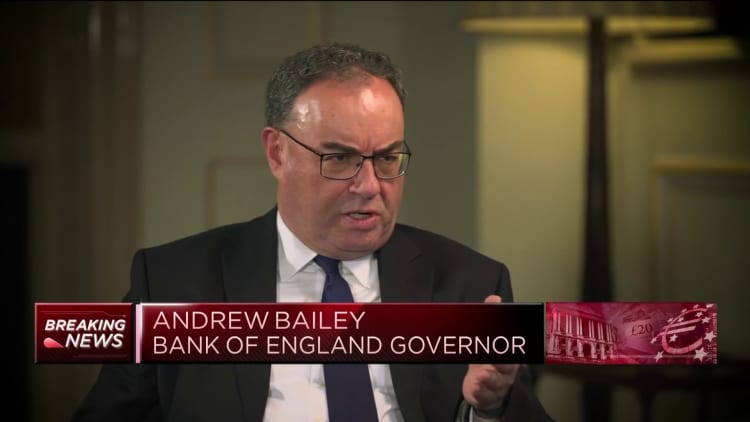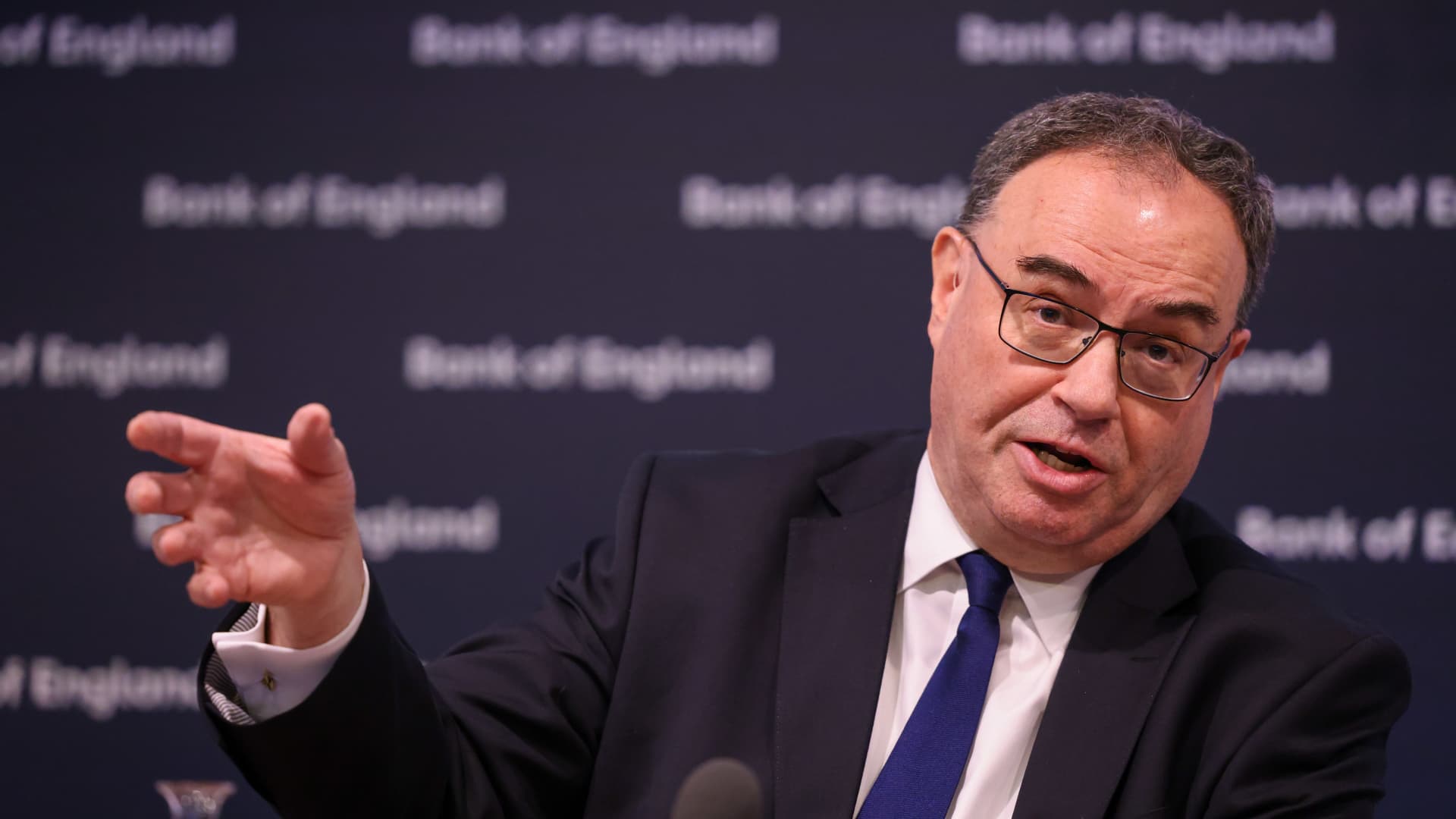Andrew Bailey, governor of the Bank of England (BOE), during the Monetary Policy Report news conference at the bank’s headquarters in the City of London, UK, on Thursday, Feb. 1, 2024.
Bloomberg | Getty Images
LONDON — Bank of England Governor Andrew Bailey on Thursday signaled that financial markets may be correct in their expectations for the future path of rate cuts.
Speaking to CNBC, Bailey said that he was “not going to commit” to a specific timeline for rate cuts, but added that he did not object to the market consensus.
“I’m not going to give a view on how many cuts there’ll be and when they will be. But I think that view that the market is taking is not one I object to,” he told CNBC’s Steve Sedgwick.
Investors priced in four rate cuts by the end of this year after the central bank voted to hold interest rates steady at 5.25% earlier Thursday. Markets now see rates falling to 4.25% by year-end.
The vote, which split the Monetary Policy Committee 6-3, pointed to a difference in opinion among board members as inflation shows signs of easing.
Two dissenters favored a further 25 basis point hike while one voted for a quarter-point cut, marking the first time since 2008 that the committee has been split in both directions. It also marks the first time since 2020 that a BOE policymaker has voted for a reduction in borrowing costs.
U.K. headline inflation unexpectedly nudged upward to an annual 4% in December on the back of a rise in alcohol and tobacco prices, while the closely watched core consumer price index figure was unchanged at 5.1%. However, it has remained on a general downward trajectory toward the bank’s 2% target.
Bailey said that he was “not going to predict” how many cuts there would be, but he indicated that the bank was “on a path” toward lowering rates.
“We’ve moved importantly on from a debate which was around how tight does policy need to be, how high do rates need to be, to how long do we need to retain this stance to achieve sustained inflation,” he said.
“The way I read the market, I think the market is of the same frame of mind as well. The market has to, of course, reach a view on when they think cuts are going to happen,” Bailey said.
“We are not going to commit to ‘it’s going to be here and not there or then and not then.’ But I very much hope that we’re on a path which will allow us to conclude the answer to that question … and we’ll get to a point where we say ‘yes, we can.'”


This story originally appeared on CNBC

